Retail Sales Strategy
What are the best ways to greet or approach a customer? How do I get shoppers to start a conversation with me, and what are some of the best conversation-starting questions? These are some of the questions answered by having selling strategies in retail stores.
What are some questions to avoid when interacting with shoppers? What must I understand when dealing with customers from different generations or with personality styles?
Answer these right, and you increase sales - miss, and your once-loyal customers abandon you for online retailers.
You’ll quickly find that coming up with the idea to change how you sell is easy. Executing that idea is where it gets interesting.
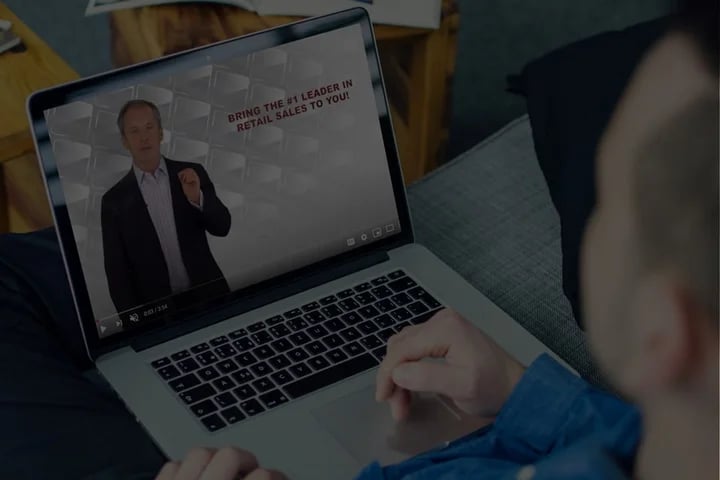
SUBSCRIBE TO RETAILRX
The Retail Newsletter over 100,000 Retail Pros read
Insights and tipsRetail Industry News
Out Weekly
Get it in your inbox.
By entering your email you expressly consent to receive other resources to help you improve your marketing efforts.
|
|
"People are voting with their feet. They don’t want what Subway has to offer," said Bob Phibbs, CEO of the New York-based consultancy The Retail Doctor. "They’ve been closing stores for a long time. They’re hoping to make this up internationally." |
|
|
"Who are their shoppers — Moms? Millennials? — they’ve lost their most loyal shoppers,” said Bob Phibbs, CEO of the Retail Doctor. "Plus, the customer experience is forgettable. Nobody is going into a J.C. Penney and saying, "You’ve got to see this place. It’s great." |
|
|
"This whole idea that there is this retail apocalypse that is inevitable and that the malls are dead? Clearly that's wrong because that's where Macy's is," said Bob Phibbs, CEO of the Retail Doctor, a consulting firm, in an interview after the results came out." 
|
A strategy is how you plan to increase sales in your brick-and-mortar store. The full lifecycle of selling in a store includes greeting a shopper, building rapport, getting customers to tell you their wants—not just needs—handling objections, closing the sale, and following up. It is how you make customer service your differentiator.
In the not-too-distant past, retailers and their employees could count on a never-ending stream of shoppers in their stores. If they missed one or two, there would be plenty of others. With retail sales high, employees could get away with bad habits and still do well.
That all changed after 9/11 as shoppers pulled back from shopping at previous levels. Then, to make themselves feel better, homeowners took out equity loans and spent lavishly lifting in-store sales. That lasted until the 2008 financial crisis when many believe shopping fundamentally changed.
With the advent of online giant Amazon, it was only a matter of time before employees were sacked, and those who were left had to do more with less. Omnichannel retail became table stakes for many retailers, meaning employees now had to pick omnichannel shopping orders.
If you're a retailer looking to improve your same-store sales, it comes down to improving your sales associates' retail persuasion skills. If you're an individual employee, you need to get a higher conversion rate of shoppers browsing your merchandise to customers purchasing it than you ever had to before.
Sales will decline unless you get more from those who come through your door, and your job may be jeopardized.
The common theme around the top strategies that the best retail sellers employ is to have employees who can build rapport and trust before trying to direct shoppers to merchandise. The best salespeople use a step-by-step sales process that builds on your good hiring skills. When you create an exceptional shopping experience, your conversions increase.
Are you interested in learning what it takes to become the best salesperson at your store?
- You have to be willing to be a student of human behavior.
- You must be willing to analyze your role in every conversation with a shopper.
- After every sale, you must be honest to understand what you could have done better.
And you can’t be lazy.
While working at an apparel retailer while I was putting myself through college, a guy came into the store and told me that he needed a red shirt for a party. "Why red?" I asked. "My girlfriend told me to wear red," he replied.
I showed him how red wasn't a good color for his skin, shared the mistake I'd made getting one once, and showed him a good blue shirt he could wear after the party. Because I’d built rapport before showing the merchandise and challenged his request, he also purchased about $300 more clothing.
He returned to the store after I sent him a handwritten note thanking him for his purchase. He said, "Most people would have just gotten me the shirt and been done with it. But you took the time to educate me. Everybody said I looked so great I should get more, so I'm changing my wardrobe." With that, he purchased thousands of dollars worth of clothes.




A lazy clerk would have simply sold him the $30 red shirt.
The essential skills you need to learn to approach customers more effectively, increase ticket value, and close more sales is to master my five-step selling process:
1. The Greeting
- Welcome customers like they’re coming to your home.
- Have a positive, friendly attitude.
- Greet them —but do give them time to enter.
2. Windows of Contact
- Find something you can talk to them about and build rapport and trust.
- Share something honest about yourself.
- Blow this, and you’ll get objection after objection at the end because they simply won’t trust you.
3. Your Question
- Use one general question to gain insight to why and what the customer is trying to do. Otherwise, you’ll be trying to pin them down on a specific item and, like a vending machine, grabbing it, delivering it to them, and having them pay the cashier.
4. Features and Benefits
- A feature is a fact. People don't buy facts. They buy benefits.
- Then explain the benefit in the same breath so that they understand how the product relates to the needs the shopper told you about.
5. Close with an add-on
- Paint a picture so clearly that the customer sees the benefits of an additional product before purchasing the one they came to your store to buy.
When you do all of this, everyone wins. The customer gets more of what they want because you made the effort to get it right and included all the other items that would make that first purchase even better.
And you did all of this with a helpful attitude, so you grew sales. This works whether they are new shoppers or existing customers.
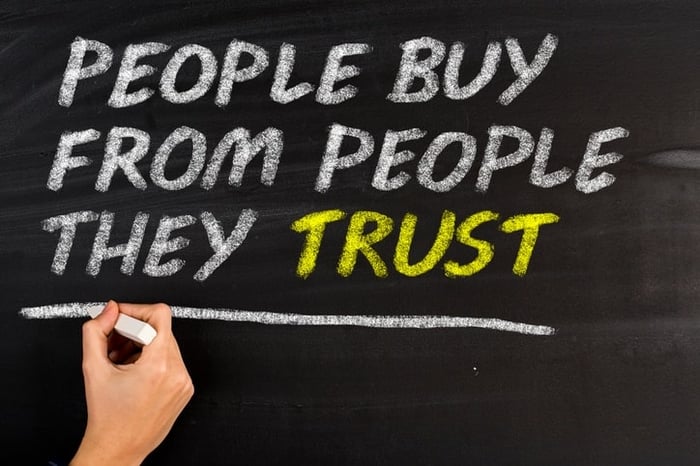
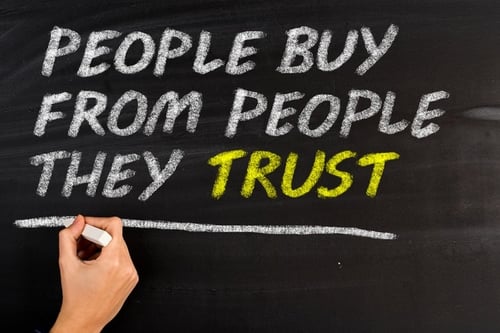
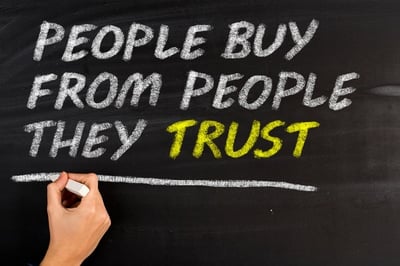
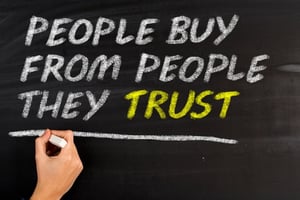
The best way to greet a shopper or approach a customer is with an open heart. You have to be more curious about who they are than what they seek. Then, you want to:
- Greet shoppers like they are coming to your home in a friendly and positive manner.
- Let customers browse and then return to make a positive statement about something they are looking at.
Your first goal is to get the shopper to build enough trust in you that your recommendations are valued.
- Compliment or ask a question that can’t be answered with "no".
Get this right, and you form the basis for a great conversation that leads to a sale. Blow it, and you face objection after objection and often lose the sale simply because potential customers don’t trust you.
The five worst questions and things to avoid saying when first interacting with shoppers and customers are:
- How are you today? You don’t care; they know it.
- Can I help you find something? This gets the dreaded "No, I’m just looking."
- Let me know if you need help. Very dismissive and often used to get away from a customer.
- Do you have a budget? You’ll limit their choices and your possibilities to get the sale.
- Are you prepared to buy today? Trying to pin a customer down is futile; they can still change their mind after answering you, so don’t ask.
Other things to note when building rapport and getting the sale is the differences between generations.
Baby Boomer customers like me enter a retail store more often than not to purchase a branded product. Millennials who grew up around various brands with no particular loyalty meet them on the floor. Since those employees themselves can't afford the premium brands my generation looks for, they suggest a cheaper version that is “just as good” and “not overpriced.”
Because of this, premium brands have become secondary as price and sales promotion become the primary criteria for quality and purchase. But...many people don’t just want the cheapest price - regardless of channels.
Unless your salespeople understand the value of your more expensive merchandise and get that a cheap flannel shirt is the most expensive because the material will shrink appreciably, that the higher priced tool offers much less fatigue, that the engineers at your firm made this one product to specifically do X when the others only do Y, your premium products will remain on the shelf. And your omnichannel strategy will be thwarted at the one place you can most increase conversion rates - your retail shop.
It’s not just generational differences throwing up sales roadblocks.
There are personality style differences to consider as well. Here are the four personality types and what drives their purchasing habits:
The Driver personality type likes to be in charge, speaks in shorter sentences, and needs to be seen as an achiever.
The Analytical type has a logical buying process, which means they can want all of the features and benefits explained to their satisfaction before buying, which can take a while.
The Expressive type sees the possibilities in everything and will follow their instincts; they know what they like and buy on feeling, not on facts.
The Amiable type doesn’t want to make waves and likes to purchase something popular or used by celebrities.
Once you understand the personality styles, you’ll realize most shoppers aren’t trying to be difficult or take a long time—it’s just how they navigate the world. And you’ll be able to navigate alongside them. There is a whole course on selling to different personalities in my online retail sales training program SalesRX.com.
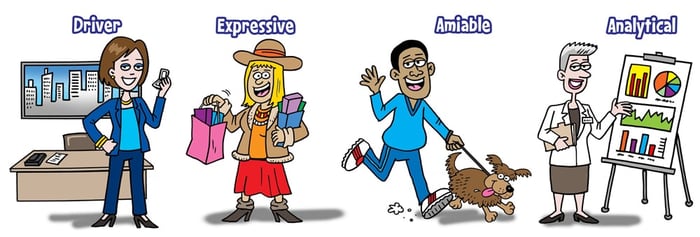
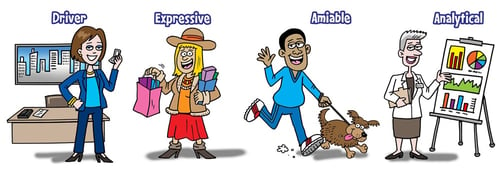
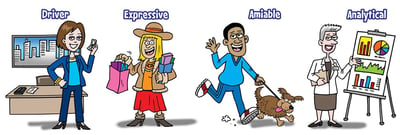
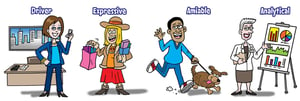
Take The Sales Personality Quiz
No matter your personality type, you can leverage your unique abilities to engage your customers and make better sales. This quiz will not only give you insight into your own type, but will also teach you to recognize, relate to, and connect with the other types to build a solid sales team.
To succeed in moving most anything, from products in your store to at-home services and more, you need to master the retail strategy of relating the value of a product over the price.
Let's face it: we live in an era where the only marketing message anyone seems to be able to come up with is a discount--from how to get more followers on social media by offering discounts to price-matching online retailers' sales to never-ending limited-time-only sales.
The problem with this discounting is that when you can only sell something when it is discounted, you've given up your profit margins; your pricing strategy is in shambles. That margin could be the difference between you getting a raise or your shop opening another location. Or even your business surviving the "retail apocalypse."
To sell value over price, you must get your shopper to open up about what they are trying to fix, add, complete, or gift. When you have all those personal details, you can understand what is important to them and highlight those time-saving, energy-saving, all-in-one, one-of-a-kind benefits of the higher-priced merchandise you are showing them.
Here’s the key: you have to be genuinely interested in them in the first place to understand where that customer is coming from in their buyer's journey. And if they continually say it’s all about price, that’s often a defense mechanism used to make themselves seem more knowledgeable and not as someone’s fool to be taken advantage of.
You know that there are products you’ve purchased based on what a great employee told you. And you know that those products gave back more than you thought possible.
That’s why it is so important to focus not only on the features of your top 100 higher-priced products (that’s what they have) but even more so on their benefits (which is what they give).
This is the fourth part of a sale, where you put on a show about how lightweight the earrings feel in her ears, how the automatic settings totally eliminate user error when taking a picture, or how the materials in the fine wool jacket compare and contrast to those of lesser quality.
Here’s also where your storytelling abilities can shine.
I used to sell Pendleton shirts, which ran about $100 each. Inside the collar was a label: 100% Virgin Wool. Invariably someone would ask what that meant, and I’d joke that it’s wool from ugly sheep. Then I would explain how Virgin Wool refers to wool taken from a lamb's first shearing.
I’d ask them if they’d worn wool shirts before. Most had and immediately told me how scratchy they were or how they shrank while being cleaned.
That’s when I would let them know that Virgin Wool is the softest, finest wool of the sheep's life. Many cheaper wool shirts are recycled rags or other scraps reprocessed and re-dyed. That’s why they get scratchy and lose their shape. That’s never the case with a Pendleton, which is why it costs more than those scratchy ones.
Forget being a social media influencer on the sales floor. Your ability to suggestively sell the better product is crucial.
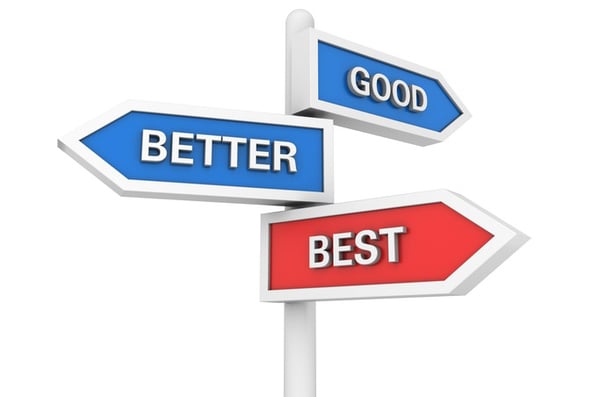
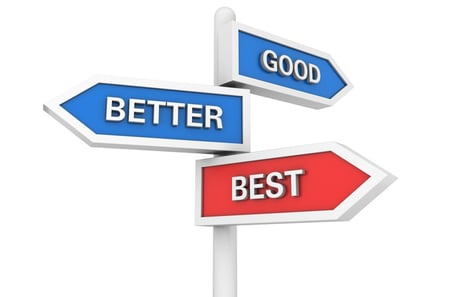
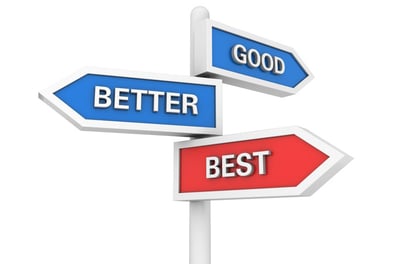

Try My FREE Retail
Assessment Tool
In order to keep up with online retail giants, you need to do all you can to compete. My new Retail Assessment Tool isn't your typical online quiz. It's a comprehensive set of questions that I've designed specifically to help retailers clearly and easily understand where they excel and what they need to fix. Discover strengths you weren't aware of and gaps you need to fill by taking this quiz today!
Retail Strategy: Upselling and Cross-Selling
While I'm on the subject of presenting the product features and benefits, you might wonder what the difference is between upselling and cross-selling.
It's simple. Upselling shows a shopper a better product like the Pendleton after showing them a cheaper wool shirt. Cross-selling, also called adding-on, shows a shopper a companion product or product system that makes the original product choice more complete. Think of the bag with the shoes, the nails with the hammer, and the router with the new tablet.
In both cases, you have to believe in your product. How will you do that when you can't conceivably buy most of what you sell? One way to build your confidence is to ask the customer at the end: When did you know you would buy it? Was it something you said? Something they felt? Anything that helps you understand their mindset is great.
Next, don't get so wrapped up in the "sell, then upsell" formula. If you've already sold them on a premium product, don't talk yourself out of the sale by making it sound like more work than the basic version. If they balk at the price, always talk about how you lose the X benefit by stepping down. Don't present the two products as about the same, or you'll only sell the cheaper version.
The add-on, however, differs from the upsell. You want to ensure the shopper has decided on the main item first. Once they have gone through the stress of allowing themselves to spend their money and said Yes, I'll take it, it's much easier for them to say yes again.
I remember when I was getting a DSL camera. The poor, untrained salesman kept mentioning filters and batteries and pulling out memory cards, and he overwhelmed me. I didn't buy a thing until I found a better salesman.
If you present all the add-ons too soon, you have again made shopping into work. You've not only tripped their fear of being too stupid to understand or use it properly, but also potentially made them feel like they are in too far over their heads to understand all you're saying.
And that should make sense--they've just dropped into your location like an alien first landing on Earth. They don't work around these products day in and day out. They don't wear or use them. They are lucky to see one is red and the other is black.




I once had a client ask me to do six workshops on how to close a sale, emphasizing closing-the-sale techniques for retail sales associates. I told them the same thing I'll tell you:
If you must resort to “closing techniques,” you probably blew the sale long before.
Why?
In this day and age, most people who are truly only browsing are doing that in their homes, dressed in their PJs, while swiping left or right on an iPad while half-watching Game of Thrones.
Those who make the effort to come into brick-and-mortar shops are not truly just browsing. They want help but probably don't know how to ask and have become gun-shy after failing to learn anything from other retailers who simply asked, "Can I help you?".
The most effective way to close a sale is to read your shopper's body language. You'll often see their arms relax; they are not folded across their chest, and the shopper looks at the product or directly into your eyes. At that point, you're very close.
Even if you don't see that, there is usually a pause after they ask questions about how it might work, how your payment plan works, what needs to be kept up, or other questions that arise from seeing themselves owning it.
Then, ask for the sale.
For clothing, it could be, "Would you prefer I put it in a box or bag?" For a custom order, it could be, "We'll just need 50% to start the design so you can have it by the end of the month. Will you be paying cash or charge?"
If you're new to sales, you might get nervous asking for such a commitment. After all, it's fairly unnatural to ask someone to buy something. If you're a veteran salesperson, you may have used the same line for years; consider making it more personal using the information you learned throughout the selling process.
You'll know when that moment is because a devil and angel appear figuratively in the shoppers' minds. The angel says to go ahead and buy it today. You deserve it; you've taken all their time and trust them. The devil is saying to wait and think about it, to ask your spouse or friend, to wait for the sale, that you don't need something so nice.
You must help the angel and minimize the devil or lose the sale.
So when you ask, understand there's a chance the shopper will say no for some reason. If you can just find out why, you may be able to overcome their objections and kill off the devil.
But you don’t want to start fishing for excuses by asking:
• Was it too much?
• Did you want to look around?
• Did you want to wait?
That will just put more doubt in their minds.
Here’s what to do to convert more sales…
Simply recap three things you learned during the sales process about what they were trying to accomplish, and repeat those specifics back to them. Then shut up.
Your goal in doing this is to see that you did get them what they wanted and not just what they originally said they needed.




For most shoppers, shopping can feel like work. And work oftentimes feels lonely. Shoppers who take the trouble to come to a brick-and-mortar retail store are looking for something more truly personal than they can find online.
Your sales associates create a good in-store experience by making them feel glad they met you that day because of what you added to their shopping experience. There are few greater honors than achieving that--and at the end of the sale, seeing their outreached hand because they just had to connect and say "thank you."
That can't be forced. Using the Five Parts to a Sale is a natural progression.
If you can use their name as a transaction is being finalized, so much the better. You want to remove as much friction as possible and make the merchandise feel even more special.
I once purchased a plant as a gift for my niece. The owner took the plant, trimmed off a few leaves, and dunked it in a bucket of water. As it was draining, she polished the leaves and added a bow.
While every retailer is different, it all comes back to what I said at the outset--you need to be more concerned with someone else than yourself. When you help enough other people get what they want, you'll find you'll get what you want in life.
As you thank the customer, you could also ask for a review on social media—but for most, that marketing strategy can feel forced. Instead, find a reason to get the shopper's email address and send a request a day later. If you did everything well, they will be more than happy to share their experience.
15 Impressive Strategies To Get The Most Out Of Your Retail Employee Training
To be truly effective, retail training must provide practical, actionable information for employees to use. This guide will outline tricks and strategies to ensure your employees have the tools they need to confidently engage with your customers.


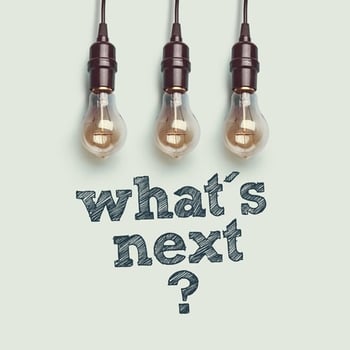

- 1. Introduction: What is a Retail Sales Strategy?
- 2. The Five Essential Steps You Need In Your Retail Sales Strategy
- 3. Retail Strategy: Interacting With Customers
- 4. Retail Strategy: Selling The Value Of A Product
- 5. Retail Strategy: Closing The Sale
- 6. Retail Sales Strategy: Following Up
- 7. Conclusion: The Best Retail Strategy Is Constant Improvement
Read More About Retail Sales Strategies
Related Blog Posts:
- How To Use Personality Styles To Improve Conversion Rates Of Your Retail Salespeople
- Selling Skills: How To Close A Retail Sale
- How To Engage A Customer Begins With A Wow Moment
- How To Add-On To Any Sale
- How To Approach A Customer – In A Good Way
- Best Cross-Selling Tips For Retailers
- How To Avoid Hearing A Customer’s “No, I’m Just Looking” Ever Again
- Lost A Sale? It All Happened With The Greeting
- Check out Bob's popular speech, Selling Like A Pro

